3.1 General properties of waves
Waves Transfer Energy Without Transferring Matter:
- Waves carry energy from one place to another, but the particles of the medium through which the wave travels do not move with the wave itself. For example, in water waves, the water moves up and down, but the wave moves horizontally.
Wave Motion in Ropes, Springs, and Water Waves:
- Ropes and Springs: If you shake one end of a rope or a spring, you create waves that move along its length, demonstrating how energy is transferred.
- Water Waves: Dropping an object in water creates ripples that move outward. The water particles themselves move in small circles, but the wave travels across the surface.
Features of a Wave:
- Amplitude: The height of the wave from its rest position (the middle) to the crest.
- Wave Speed (v): The speed at which the wave travels through a medium.
- Wavelength (λ): The distance between two consecutive crests or troughs.

- Wavefront: A line representing the crest (peak) or trough of a wave. In water waves, wavefronts can be seen as concentric circles.

- Frequency (f): The number of waves passing a point per second, measured in hertz (Hz).

- Crest (Peak): The highest point of a wave.
- Trough: The lowest point of a wave.

Wave Speed Equation:
- The equation for wave speed is:
v=fλ
where v is the wave speed, f is the frequency, and λ is the wavelength.
Transverse and longitudinal waves
There are two main types of waves
- Transverse waves
- Longitudinal waves
1. Transverse Waves:
In a transverse wave, the vibrations are at right angles (perpendicular) to the direction of wave travel. Examples include:
- Electromagnetic waves (e.g., light, radio waves)
- Water waves
- Seismic S-waves (secondary waves in earthquakes)

2. Longitudinal Waves:
In a longitudinal wave, the vibrations are parallel to the direction of wave travel. The particles move back and forth in the same direction as the wave. Examples include:
- Sound waves
- Seismic P-waves (primary waves in earthquakes)
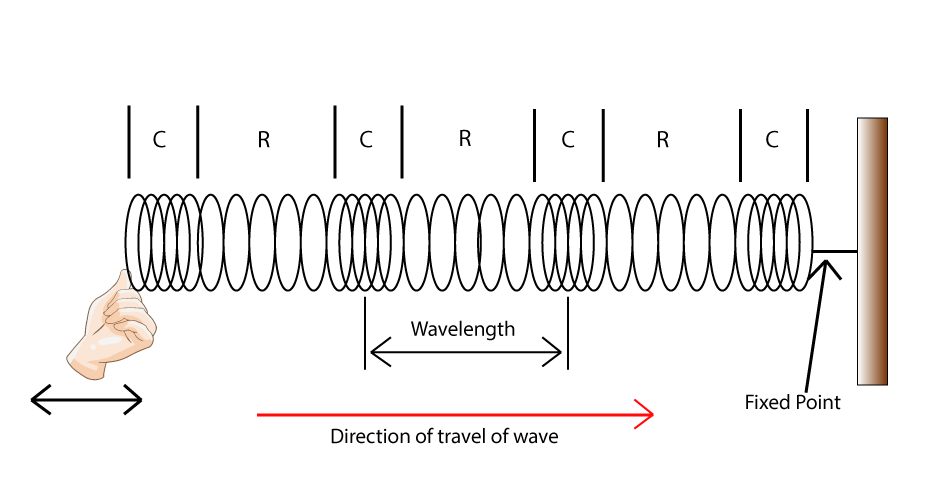
C marks the points where coils are most tightly packed (Compressions)
R marks the points where the coils are further apart (Rarefactions)
Wave Behavior:
- Reflection: When a wave strikes a surface and bounces back. This occurs when water waves hit a barrier or when light reflects from a mirror.
- Refraction: When a wave changes direction as it enters a different medium due to a change in speed. For example, light bends as it passes from air into water.
- Diffraction: The bending of waves as they pass through a narrow gap or around an obstacle. The amount of diffraction depends on the size of the gap and the wavelength of the wave.
Ripple Tank Experiments:
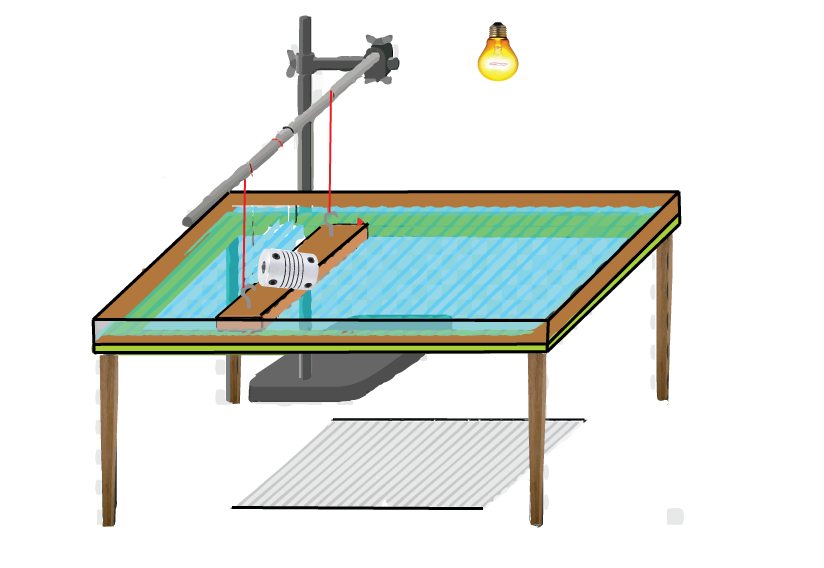
A ripple tank is used to observe wave phenomena:
- Reflection: When waves hit a plane surface (like a wall) and bounce back.
- Refraction: When waves pass into a region of different depth, they change speed and direction.
- Diffraction (Gap): When waves pass through a narrow gap, they spread out. The narrower the gap, the more the waves spread.
- Diffraction (Edge): When waves encounter an edge, they bend around it.
1. Reflection (water waves)

2. Refraction due to a change of speed

When the wave is traveling form deep water to shallow water the wave slows down (Decrease in speed). As the frequency is unchanged, a decrease in speed must cause a decrease in wavelength. (Refer to the wave equation)
When the wave is traveling from shallow water to deep water the wave speed up. Frequency is unchanged but wave length is increased. (Refer to the wave equation)
Refraction can have two effects:
- The wavelength of the waves can increase or decrease (Frequency will not change)
- The waves can change direction
3. Diffraction through a narrow gap
When the gap is smaller than the wavelength of the wave

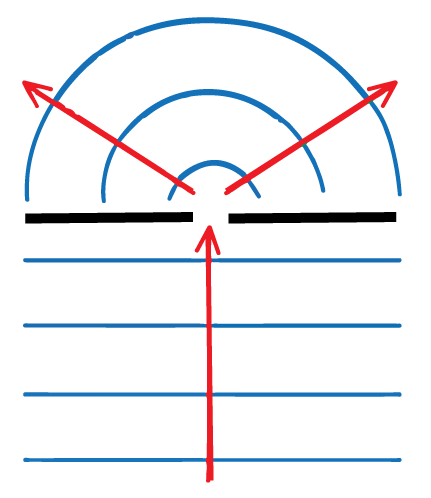
As the gap gets bigger, in the case that the gap is larger than the wavelength, the waves no longer spread out at all

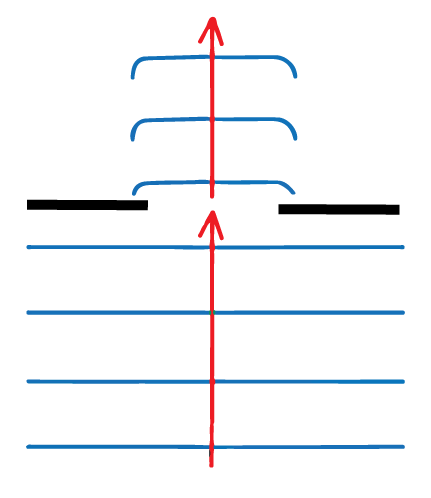
3. Diffraction when waves pass an edge
When a wave goes past the edge of a barrier, the waves can curve around the edge
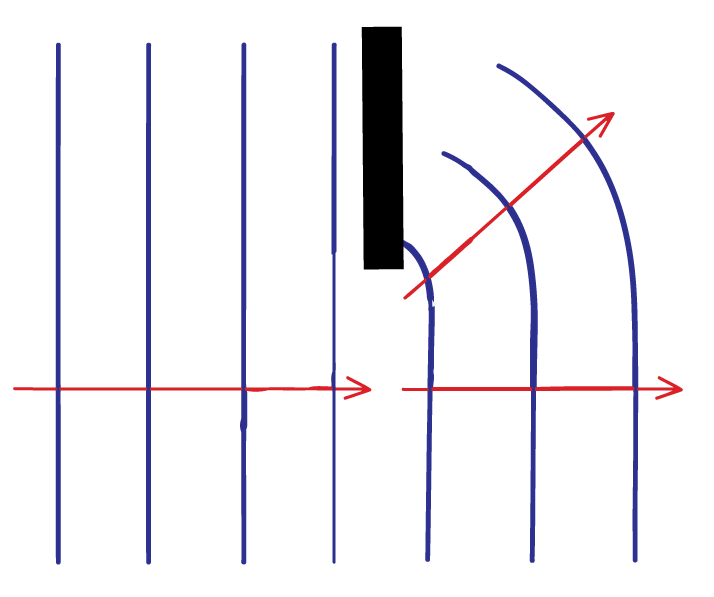
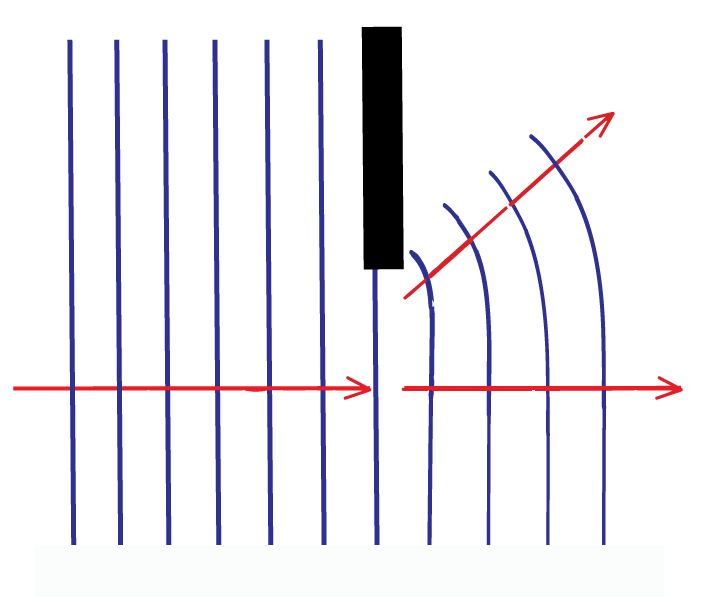
Supplement
Effect of Wavelength and Gap Size on Diffraction:
- The amount of diffraction depends on the relationship between the wavelength of the wave and the size of the gap:
- If the gap is similar in size to the wavelength, the diffraction is greater.
- If the gap is much larger than the wavelength, diffraction is less noticeable.
Effect of Wavelength on Diffraction at an Edge:
The greater the wavelength, the greater the diffraction.
- Longer wavelengths bend more around an edge than shorter wavelengths. For example, sound waves (with long wavelengths) diffract more than light waves (with shorter wavelengths).
- Diffraction affects radio and television signals. Long wave radio signals are much less affected by buildings, hills, tunnels etc. than short wave or VHF radio, or television.

Good notes have every thing important
Hey to anyone who mad ethis its great for revising i thank you from the bottom of my heart <3